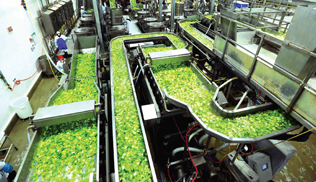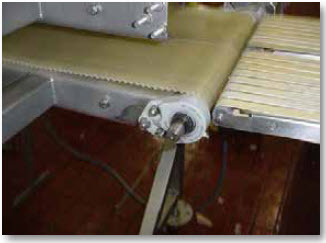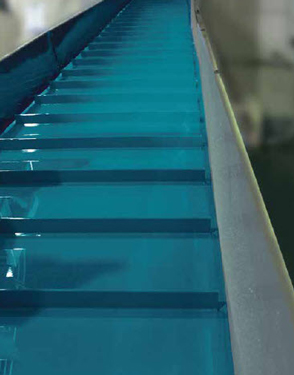
When I was five or six, we had a magician perform for a school assembly. I remember watching the magician make his assistant disappear right before my eyes. I truly believed she vanished into thin air only to reappear after a few spins of a box and a couple of magical words. In my later years, I watched famous magician David Copperfield make the Statue of Liberty disappear. Being more mature, I knew the statue was still there, and that it was just an illusion that I couldn’t see it.
As an adult, I see the same sort of things on the plant floor. We sometimes think like a child and assume things just vanish into thin air for us to never think about again. For example, most plants have a preventative maintenance program in place that requires bearings to be regreased. We fill them up and then, a few weeks or months later, we fill them up again. Where did the old grease go? Did it wash out during sanitiation? Did it drip onto the floor, or worse, onto the product? Or did it just disappear like the woman in the box?
I sometimes walk through a plant and see pieces of a conveyor belt missing, or a hole in a machine where at one time there was a fastener. Did these items get found and thrown away, or did they end up in the product? Tyson Food recently had to recall nearly 12 million pounds of chicken strips over concerns that the product was contaminated with pieces of metal that most likely came from a piece of equipment on the production floor. Unfortunately, magic like we knew as children doesn’t exist in the food manufacturing plants of today. The missing parts and pieces aren’t just disappearing – they are entering and contaminating our products; harming consumers and costing our plants time and money.
Food plants must do everything possible to ensure that the product being made is safe for consumers. When purchasing new equipment, special consideration should be made on minimizing the number of parts on a machine, and how each part is captured to prevent it from entering the product stream.
When analyzing existing equipment, ask yourself if there are replacement parts that are more hygienic than existing parts? Can materials be replaced with something else that is more detectable downstream? Your team of experts at CBT can help you analyze your equipment and come up with solutions for the sanitation issues in your plant.
 CBT partner, Dichtomatik, offers metal detectable o-rings that ensure any o-rings that potentially wear out and break are found down the product stream. The o-rings are available in four different materials to provide solutions for a wide range of applications.
CBT partner, Dichtomatik, offers metal detectable o-rings that ensure any o-rings that potentially wear out and break are found down the product stream. The o-rings are available in four different materials to provide solutions for a wide range of applications.
 Looking for an alternative to the disappearing grease mentioned above? Timken’s EDT brand offers a solid lube alternative. The oil-permeated solid polymer provides excellent lubrication for the bearing while eliminating contamination risks. USDA-H1 approved oils are used in food processing formulas. There is no more worrying about the necessary lubrication for your equipment contaminating the product.
Looking for an alternative to the disappearing grease mentioned above? Timken’s EDT brand offers a solid lube alternative. The oil-permeated solid polymer provides excellent lubrication for the bearing while eliminating contamination risks. USDA-H1 approved oils are used in food processing formulas. There is no more worrying about the necessary lubrication for your equipment contaminating the product.
Go the extra step on modular or wire belt conveyor bearings by using Timken/EDT’s greaseless solid polymer insert bearings. The entire polymer bearing is completely sanitary. These units are USDA/NSF approved, offered in inch and metric sizes, and available in high and low temperature materials.

 Your solution for broken modular conveyor belts could be Volta’s metal and x-ray detectable material. it is available in superdrive and duel drive constructions. The homogenous design eliminates the risk of broken modules and the metal detectable material ensure if pieces of belt do get damaged, they will be detected downstream.
Your solution for broken modular conveyor belts could be Volta’s metal and x-ray detectable material. it is available in superdrive and duel drive constructions. The homogenous design eliminates the risk of broken modules and the metal detectable material ensure if pieces of belt do get damaged, they will be detected downstream.
Let CBT help you improve the hygienic design of your plant. Contact your CBT account manager for additional information.

Resources:
- Timken Solid Polymer Lubricant Literature
- Volta Metal Detectable Belts Literature
- Timken Poly Round Inserts Literature
- Dichtomatic Metal Detectable O-ring Literature








